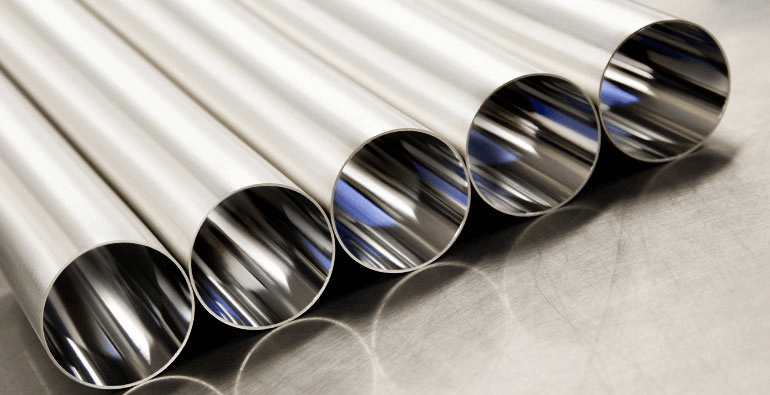In the production process of stainless steel seamless steel pipe, it is necessary to pay attention to the production characteristics of the pipe itself. As long as these characteristics and advantages are fully utilized, the quality of the stainless steel seamless steel pipe produced can be as good as possible.
There is no difficulty in piercing when martensitic stainless steel is a single austenite structure at high temperature, but the piercing performance will be reduced when there is a dual-phase structure. The heating temperature of the tube blank is usually 1130-1160 °C, the temperature at the furnace tail is lower than 900 °C, the final rolling temperature is greater than the critical point transition temperature, the low carbon is not less than 850 °C, and the high carbon is not higher than 925 °C. As the carbon content of martensitic stainless steel increases, the strength and hardness of the stainless steel increase, and the plasticity decreases. When cold drawing, a mandrel rod should be used as much as possible, because it is easy to burst after air drawing.

The high temperature plasticity of austenitic stainless steel is related to the residual α phase. Usually the plasticity decreases with the increase of α phase. In addition to the alpha phase, other residual phases exist in austenitic stainless steel, such as various forms of carbides, intermetallic compounds, etc. These excess relative stainless steel pipes have an influence on the plasticity, and the degree of influence depends on their quantity and state. When heated, the excess phase appears as a network distributed on the grain boundary, which will significantly deteriorate the plasticity of the stainless steel tube. Austenitic stainless steel tube has low plasticity and high deformation resistance at high temperature. When using skew rolling and piercing, special attention should be paid to selecting reasonable deformation parameters and temperature parameters. The austenitic stainless steel tube exhibits a single-phase austenite structure after solution treatment, which is characterized by high σb, but low σs, high elongation and toughness, and good cold deformation performance, so it is preferable to be larger. The pass deformation amount. However, the work hardening is very large during cold deformation, so the continuous processing performance is poor.
Ferritic stainless steel is a single-phase structure and has no critical transformation point (phase transformation). Therefore, when the heating time of the tube blank is long and the temperature is high, the grain growth is serious, resulting in a significant decrease in the plasticity of the steel. The maximum heating temperature of the tube blank is 1000-1060 °C. The steel has good plasticity (piercing properties) in this temperature range. The heating temperature before cold drawing the hammer head is 700 ~ 850 ℃. Carburizing should be prevented during heating, and water quenching should be carried out after the hammer head. Since ferritic chromium stainless steel is brittle at room temperature, has poor cold working performance, and is easy to crack and break during cold drawing, it is best to draw at a certain temperature (see warm drawing of pipes), and the drawing speed should not be too large. When cold-rolling ferritic stainless steel pipes, the degree of deformation of the pipe material during rolling is not more than 40% to 48%. In subsequent passes (after surface preparation and heat treatment), depending on the degree of grain refinement, the degree of deformation can be increased to 55% to 65%. In order to avoid cracks in the steel pipe during rolling, the temperature rise of the pipe during rolling is favorable, so in most cases, emulsion cooling tools and metals are not used when rolling such stainless steel pipes.
Both austenitic and martensitic stainless steel pipes have high deformation resistance, a relatively large tendency to work hardening, and a slow recrystallization rate at high temperatures. Therefore, special attention should be paid to equipment and motor capabilities when cold rolling such stainless steel pipes. Ferritic or semi-ferritic low carbon stainless steel pipes have the same deformation resistance as normal carbon steels.